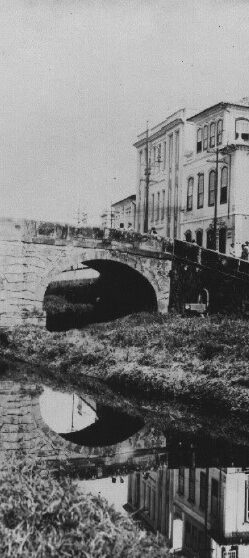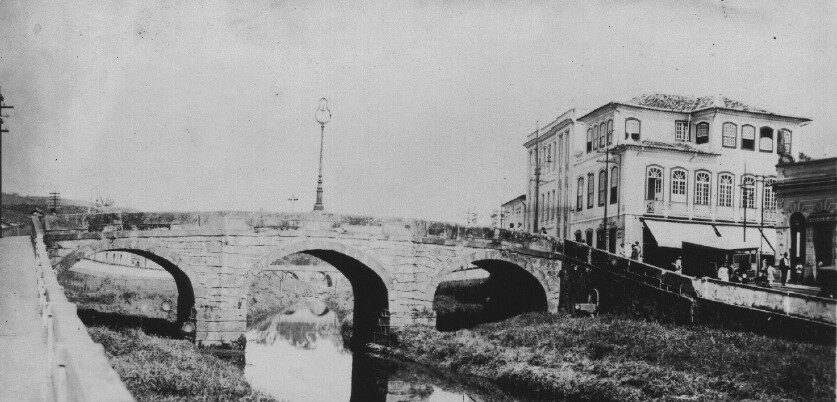City of Progress
The arrival of the railway brought new ideologies and notions of progress and development to São João del-Rei. It introduced new habits, customs, goods, ideas, and fashions through the people who visited the city. This was the so-called "modernity" arriving in the city, delivered by the railroad. After the railway was built, the entire region underwent significant economic and territorial reorganization. Product exports increased, local commerce thrived, the textile industry began to innovate, and food production escalated to meet higher demand. Moreover, the railway was crucial in urban expansion, developing around the main line and its branches.
“Mais do que significações econômicas, a ferrovia trazia uma ligação com todas as imagens que mentes provincianas construíam do Rio de Janeiro. Progresso e civilização, com todo o refinamento que se atribuía a estes termos, eram palavras-chave para esta sociedade.”
Rúbia Soraya Lelis Ribeiroin As fotografias de André Bello (1879-1941): imagens da modernidade em São João del-Rei [Photographs of André Bello (1879-1941): images of modernity in São João del-Rei], published in 2006.
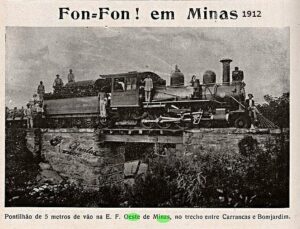
FON=FON! IN MINAS
Author unknown, 1912. Hugo Caramuru's personal collection.
Arrivano gli italiani!
Since the slave trade prohibition in 1850, the Brazilian government actively encouraged European immigration, offering incentives such as land ownership and citizenship. This policy aimed to replace black labor in agricultural labor and was also part of a broader strategy to "whiten" the population. Many Italian families settled in São João del-Rei, especially in what became known as Colônia do Marçal, after arriving by train on December 3, 1888, at Western Minas Railway Station. They settled in the area known as Várzea do Marçal, later renamed Colônia do Marçal. By 1896, the state had formalized their ownership of land plots. The Italian community was particularly active in agriculture, which supplied the local market, but Italians also worked on the railway and in textile factories.
"In complex roles like train driver, black or slave labor was avoided due to the prevailing attitudes of scientific racism that emerged in the 19th century. There was a belief that black individuals could not competently handle machinery—they would supposedly break them or fail to maintain them. Thus, Italians were frequently employed as they were considered more capable due to their European descent."
Relato de Welber Santos, historian and local resident.
Hotel Oeste de Minas
To accommodate the new demand from the large number of travelers who would begin to circulate with the arrival of the railway, the railway company itself created the Hotel Oeste de Minas. Located on Avenida Hermílio Alves, very close to the Station, the establishment promised guests comfort and hot or cold baths. Unfortunately, on August 21, 1917, the hotel was destroyed by a fire.
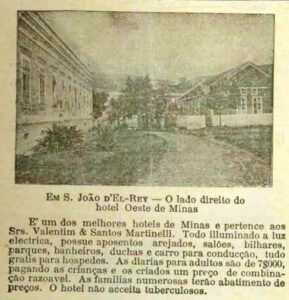
Reproduction of advertisements for the Hotel Oeste de Minas
Several authors, 1910's.
Personal collections of Gustavo Zenquini, Cássio dos Santos and Nei Bassi
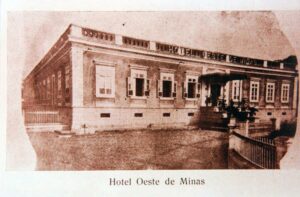
Reproduction of advertisements for the Hotel Oeste de Minas
Several authors, 1910's.
Personal collections of Gustavo Zenquini, Cássio dos Santos and Nei Bassi
Imported and “modern”
Grand pianos for living rooms, European meat grinders in the kitchen, solariums in the gardens, French tiles. It was through the rails that these and other desirable objects, considered modern and of great value, arrived, coming from various European countries. Before the train, for example, there were no pianos in São João, only organs. Now, with the ability to transport large volumes, the city was flooded with new products and aesthetics. Its architectural landscape was completely transformed: the railway enabled the transport of bricks, metal structures, and new ornamental materials that began to shape the scenery of São João.
"The way of building, the way of renovating houses, the broader use of iron—everything changed. It became easier to import expensive instruments. Musically, for example, the arrival of the piano had a significant impact on music production. Not that there wasn't music before, but the train greatly facilitated the arrival of larger items."
Recounting by Welber Santos, historian and local resident.
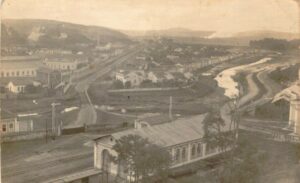
SÃO JOÃO DEL-REI COURTYARD
Júlio Gomide, 1928. Gustavo Zenquini's personal collection.
Cinema and Photography
Among the various items that arrived via the EFOM rails were photographic materials. Previously, photographers had significant difficulties transporting their equipment and setting up their darkrooms. This new mode of transportation allowed photography culture to spread throughout the city.
In 1929, the first cinema in São João, Cine Capitólio, was inaugurated, owned by J. Faleiro & Cia in partnership with André Bello, an Italian immigrant and traditional local photographer. This company also supplied film rolls to cinemas in the region that were accessible by the tracks of Estrada de Ferro Oeste de Minas.
"Although steeped in its Baroque heritage, commanded by the peals of its church bells, São João del-Rei stepped boldly into the age of modernity. The city's transformation was heralded by the hiss of steam locomotives, the shrill calls of factory whistles, the pioneering glow of electric lamps, the magic of the cinematograph, and the novelty of the telephone. In this new era, the art of photography became not just a tool for documentation but a vibrant medium for capturing the essence of progress, bearing witness to change, and broadcasting the city's burgeoning modern identity."
Rúbia Soraya Lelis Ribeiro, in As fotografias de André Bello (1879-1941): imagens da modernidade em São João del-Rei [Photographs of André Bello (1879-1941): images of modernity in São João del-Rei], published in 2006.
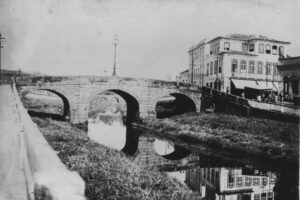
VIEW FROM CADEIA BRIDGE
André Bello, date unknown. Available in As fotografias de André Bello (1879-1941): imagens da modernidade em São João del-Rei [Photographs of André Bello (1879-1941): images of modernity in São João del-Rei], published in 2006.
The Railway and Rapid Communication
With the railway came the telegraph line. The telegraph was an essential communication tool at the station, used daily for rapid exchanges between stations and their personnel. It is a device that allows for the sending of messages over long distances using electricity and Morse code. The distinctive taps of the telegraph form an alphabet from combinations of dots, dashes, and spaces. Telegraphy played a crucial role in railway history as it enabled efficient long-distance communication, enhancing safety. The telephone, like the telegraph, was a critical communication medium for the railway's operation. Its invention occurred accidentally when scientist Alexander Graham Bell was attempting to improve the telegraph, which only allowed one message to be sent at a time, into what he termed a "multiple telegraph."
Since the mid-19th century, telegraphic communication had been enabled across various continents through submarine cables. The map highlights how telegraphy facilitated integration, establishing direct communication between São Paulo, Minas Gerais, and Rio de Janeiro, as well as with countries like Portugal, Argentina, Austria, Hungary, Germany, Italy, England, and the United States.
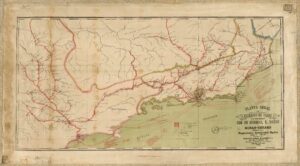
General Map of the Railways of the Provinces of São Paulo, Minas Gerais, and Rio de Janeiro, and their Telegraphic Connections
Alexandre Speltz, 1885. Jorge A. Ferreira Jr. Collection.
THE NEWS OF SLAVERY ABOLITION
The train brought everything, including news. One of the most awaited and celebrated pieces of news was undoubtedly the abolition of slavery. The same day it was signed, on May 13, 1888, São João learned of the news thanks to the telegraph service. Witnesses recall bands playing and fireworks going off. The next day, a Monday, people gathered in front of the train station to wait for the mailbags containing the historic news.
“À noite, iluminou-se toda a cidade e repetiu-se a passeata popular, havendo no nosso teatro espetáculo de gala. […] Foi o povo, à frente de duas bandas de música, esperar, na estação, as malas do correio que traziam a publicação da Lei Áurea, sendo à chegada do trem, saudosos os propagadores da abolição, com salvas estreipitosas, hino nacional e vivas estusiásticos”.
Denilson de Cássio Silva, in his book O Drama Social da Abolição. Escravidão, Liberdade, Trabalho e Cidadania em São João del-Rei, Minas Gerais (The Social Drama of Abolition: Slavery, Freedom, Work, and Citizenship in São João del-Rei, Minas Gerais), published in 2016.
The Whistle of the Textile Factories
With the arrival of the railroad, the city saw the establishment of major industries, such as textiles, attracted by the ease of transporting products by rail. This marked São João del-Rei’s entrance into the Industrial Age. According to reports, São João del-Rei had six textile companies that employed a significant portion of the local workforce. The city thus began a sonic and temporal transition: moving from the timekeeping of church bells to the signals and whistles of factories and the railway. Some of the better-known factories were São Joanense, which still exists today, Santanense on Leite de Castro Avenue, which had three weaving mills, and Dom Bosco.
"Besides the railway itself, industries and textile mills arrived, which operated steam boilers. [...] The infrastructure facilitated both the shipment of finished products and the receipt of raw materials. The railway was crucial for the existence of these factories."
Recounting by Bruno Campos, researcher and local resident.
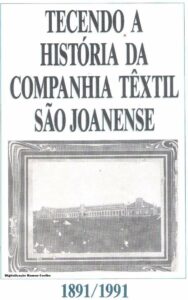
Booklet celebrating 100 years of the São Joanense factory – 1991. Ramon Coelho's personal collection
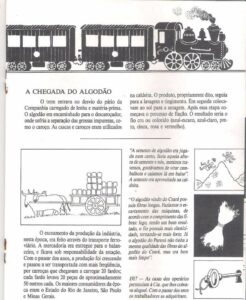
Booklet celebrating 100 years of the São Joanense factory – 1991. Ramon Coelho's personal collection
The Railway Yard - The Station
São João del-Rei Station was divided into two distinct buildings. One building served passengers and station administration, and the other, now housing the Railway Museum, stored import and export goods such as leather and salted products.
In the São João del-Rei Railway Complex, the two passenger waiting rooms were not divided by class, as seen in French stations, but by gender, with a smaller room designated for ladies and a larger one for gentlemen.
Do you know why the station platform roof is shaped this way?
Besides its aesthetic appeal, the design was chosen to manage the smoke emitted by steam locomotives. Many railway buildings adopt this design. Their platforms are equipped with a skylight at the top of the roof, enhancing both ventilation and lighting.
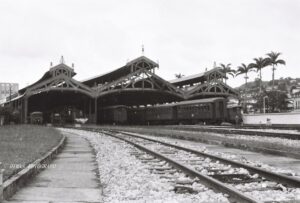
SÃO JOÃO DEL-REI PLATFORM
Dimas, date unknown. Gustavo Zenquini's personal collection.
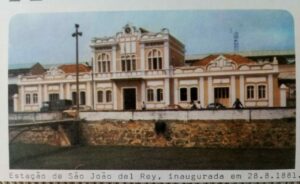
SÃO JOÃO DEL-REI STATION
João Bosco Alves, 1981. Gustavo Zenquini's personal collection.
The Railway Yard - The Roundhouse
This area was primarily used for storage and was accessible only to employees of the Complex. The roundhouse, built around 1882, is located in the central area of the Railway Complex and features a turntable at the center with a 6.5-meter diameter, accommodating 24 tracks for storage.
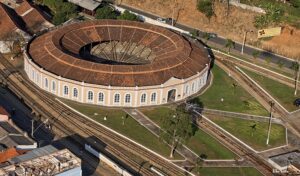
SÃO JOÃO DEL-REI ROUNDHOUSE
Kiko Neto, date unknown. Gustavo Zenquini's personal collection.
The Railway Yard - The Workshops
The area consists of the lathe shop, carpentry, forge, and boiler shop, which still operate today and are used to repair passenger and freight wagons as well as perform maintenance and inspections on locomotives. The workshops had "management offices," small buildings within the sheds intended for the administrative functions of the heads of these departments.
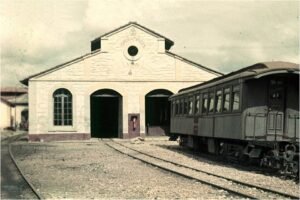
FRONT OF THE OPERATING WORKSHOPS
Guido Motta, 1974. Gustavo Zenquini's personal collection.
Chagas Dória Station
The old railway line between São João del-Rei and Tiradentes passed through what is now Amaral Gurgel Street, where a stop was established as part of the original stretch from Sítio to Antônio Carlos. In 1908, this stop was renamed from Matosinhos to Chagas Dória, in honor of the engineer and director of EFOM, Francisco Manoel Chagas Dória, who was responsible for the construction of the branch. On August 24, 1908, the extension from Chagas Dória to the Águas Santas Spa was authorized and inaugurated in 1910. The opening of this stretch coincided with the inauguration of the Cidade-Matosinhos railway branch, with five travel schedules during the week and eight on Sundays, holidays, and holy days.
The architectural project of Chagas Dória, as we know it today, was only inaugurated on April 15, 1911, when an improvement in the building was required due to the large number of passengers and cargo at the time. In this construction, the station received its iron sheet roof and floral trims.
"This building, recently demolished, was related to the railway, but I ended up discovering that the original Chagas Dória station was in front of the current one, with part of its platform still existing. This station was the end of the Matosinhos Branch, which was about 200 meters long until 1910, when the Águas Santas branch was inaugurated. In 1911, the station was relocated to the center line following the realignment of the original stretch between São João del-Rei and Sítio."
Recounting by Bruno Campos, in the website Estações Ferroviárias (Railway Stations).
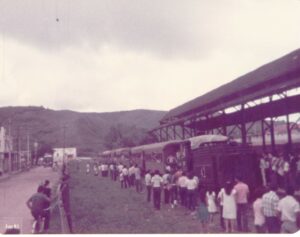
LOCOMOTIVE 42 MANEUVERING IN CHAGAS DÓRIA
Author unknown, june 1983. Gustavo Zenquini's personal collection.
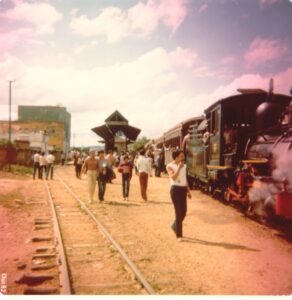
LOCOMOTIVE 37 AT CHAGAS DÓRIA STATION
Author unknown, October 1982. NEOM ABPF Collection.
Leite de Castro Avenue
From 1887 to 1984, the main line of the Estrada de Ferro Oeste de Minas stretched northwest across the urban area of the city. This expansion by the railway in 1887 significantly contributed to the urban growth in this direction.
Avenida Leite de Castro formed part of the route to the Aureliano Mourão Station. Initially laid out as a railway track, roads subsequently developed around it; the main road was named after Joaquim Leite de Castro, an engineer for EFOM and city councilor in São João del-Rei. Leite de Castro played a crucial role in building substantial sections of Estrada de Ferro Oeste de Minas railways.
After rail transport ceased, the tracks on the avenue were removed in 1982. The only structure left was the bridge, which was demolished in 1986 to make room for the road bridge that currently stands.
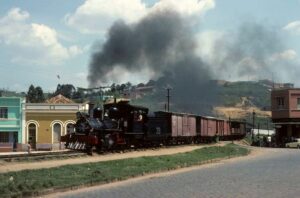
LOCOMOTIVE 39 PASSING THROUGH AVENIDA LEITE DE CASTRO
Les Tindall, 1976. Gustavo Zenquini's personal collection.

LOCOMOTIVE 37 ON AVENIDA LEITE DE CASTRO, AT KM 100
Author unknown, 1982. Gustavo Zenquini's personal collection.
ÁGUAS SANTAS BRANCH LINE
The Águas Santas community quickly underscored the need for integration with São João del-Rei's central area. This was largely due to a spa known for its therapeutic thermal waters, which are believed to offer numerous health benefits. On April 21, 1910, the EFOM railway branch connecting São João del-Rei to Águas Santas was inaugurated. This section was 11.805 kilometers long, beginning at Chagas Dória Station in the Matosinhos neighborhood, crossing Rio das Mortes, cutting through Colônia do Marçal, and extending to the Águas Santas spa. Currently, the Museum of Casa das Águas is set up opposite the spa, managed by the Minas Gerais Forestry Institute, to preserve the history and geodiversity of the APA São José and the State Wildlife Refuge Libélulas da Serra.
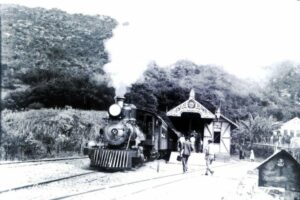
LOCOMOTIVE 12 AT ÁGUA SANTAS STATION
Author unknown, 1956. Gustavo Zenquini's personal collection.
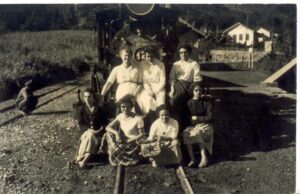
YOUNG PEOPLE WITH LOCOMOTIVE 12 IN ÁGUA SANTAS
Author unknown, date unknown. Cesar Reis’s personal collection.






